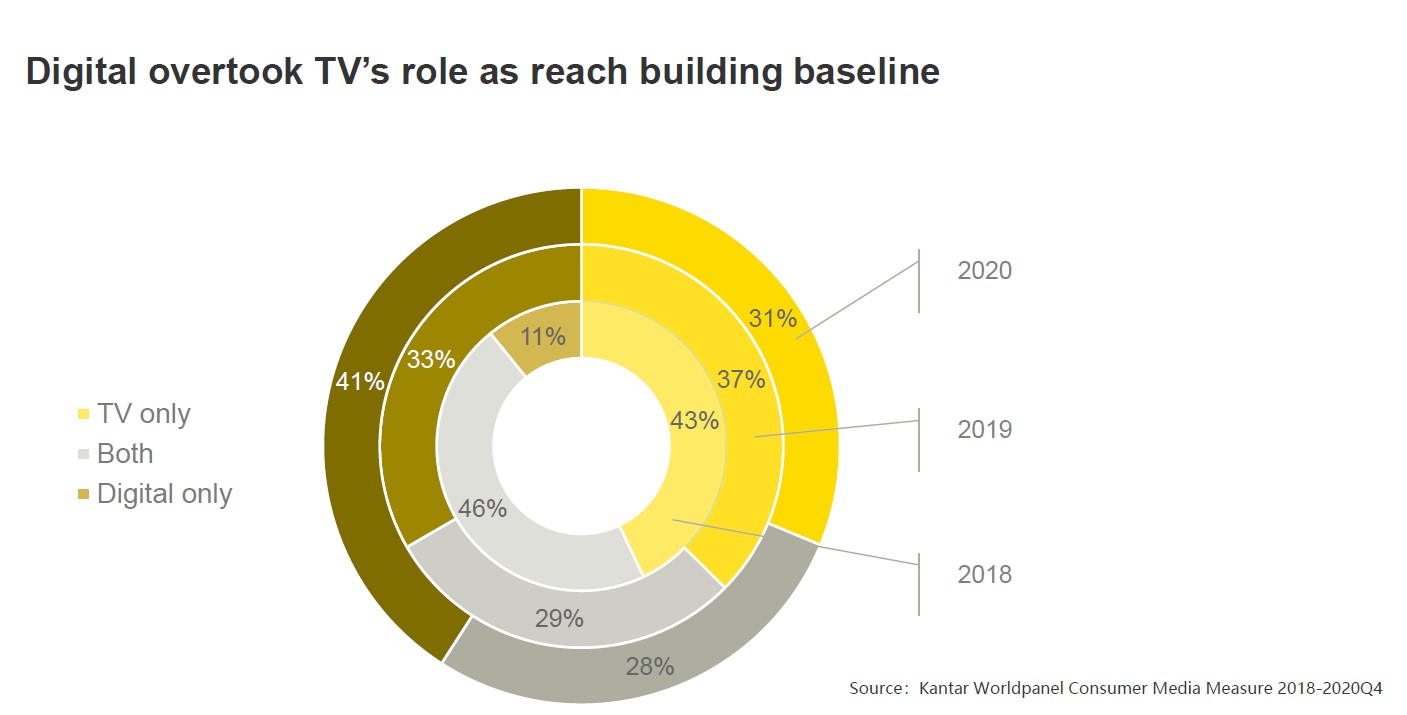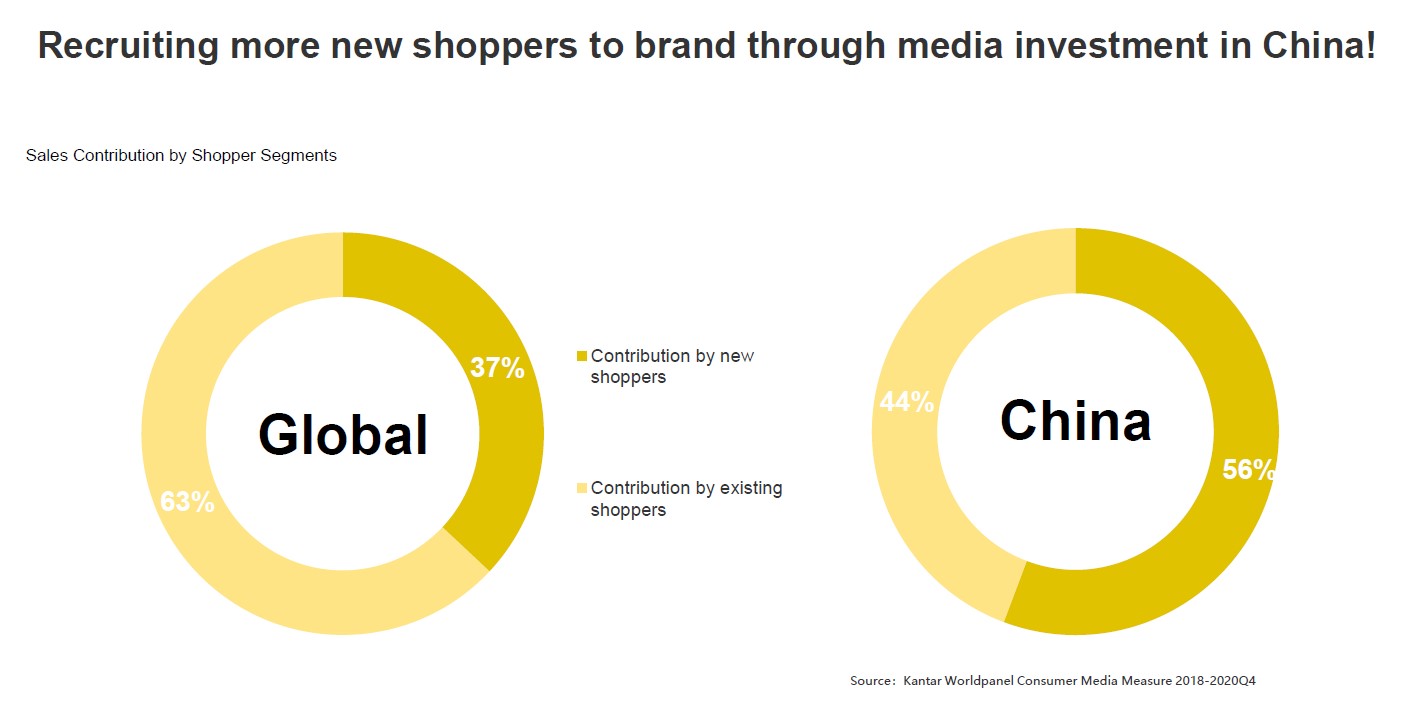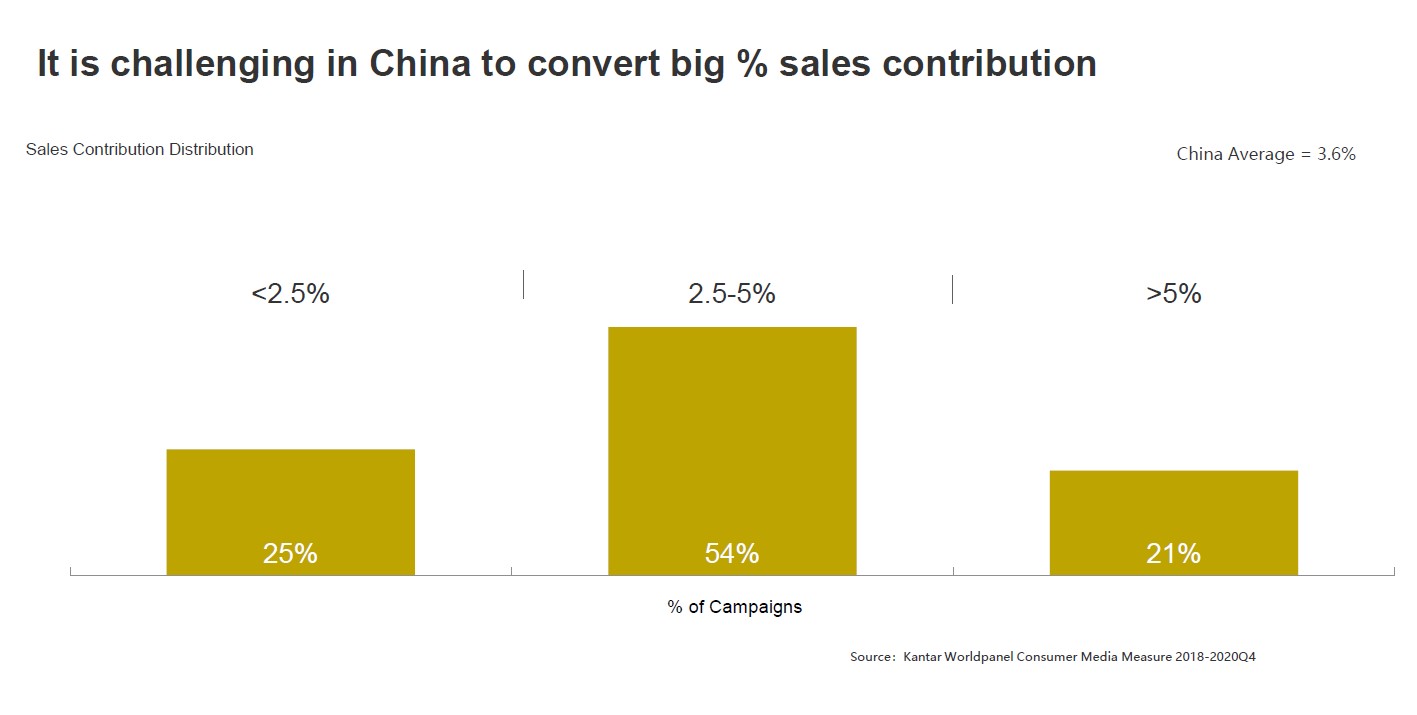Over the past few years, marketers in China have been powered by the advancement of technologies as well as the rapid expansion of digital touchpoints. However, where to advertise and how to reach their targets have become a much more complex decision to make. Should traditional marketing principles be followed or adapted? Should emerging platforms receive of a bigger share of marketing investment? Does TV still have a role to play in brand building?
In order to best answer these questions, Kantar Worldpanel has revisited over 70 Consumer Media Measure studies within the FMCG market. This is a consumer-focused solution that involves measuring the impact on buyers purchasing based on their historical buying behavior and multi-media ad exposures.
To make every dollar spend on media worthwhile, maximizing reach is still an important first step. Unsurprisingly, digital has now overtaken TV’s role as the main reach builder. Reach of cross media campaigns that were contributed by “digital only” was on the rise year after year. However, TV is still important in communicating with a great number of audiences. For total FMCG, without TV, around 1/3 of communication opportunities are lost.

Within digital, halo effect across different media can maximize media impact, especially OTV & Short Video plus Social advertising work in best synergy. A combination of the three can bump up media effectiveness by 13-29% than just OTV itself.
From shoppers’ perspective, for brands big and small, established or emerging, driving new recruits always tops the priority list no matter how successful they manage customer data to maintain loyalty. A highly dynamic buying system requires continuous media investment to recruit new shoppers for brand. An average of 56% of sales contribution driven by media was coming from new shoppers, which is significantly higher than the global average. When we break down by different media vehicles, they can all drive new shoppers, especially OTV and social which have a stronger role in attracting new shoppers in general.

The next questions to ask are: “who are my potential new buyers?” and “how can we reach them?”, which are often outside the scope of many big-data solutions as locating them needs continuous understanding of consumers’ purchase behavior across different purchase channels. Kantar Worldpanel’s Activate solution can help to precisely target audiences which are most important to your business growth based on cross channel purchase behavior in your DMP.
In order to measure how effective a campaign is we will isolate the impact of media using regression modelling. This allows us to quantify the proportion of a brand sales (i.e. sales uplift) directly coming from people who have been exposed to the campaign. When we compare with campaigns evaluated in other countries, we found that it is more challenging in China to drive sales uplift due to the complexity and sheer scale of the market. Among Kantar Worldpanel’s Consumer Media Measure (CMM) projects in the past three years, the average sales uplift was 3.6% with only 21% of campaigns delivering above 5% sales uplift.
Campaigns that were able to deliver stronger value contribution than those with similar reach level were more likely to communicate with consumers with relevant content (resonance of copies / IP coops with brand message/ TA), on new occasions (utilization of specific media resources) and at right timings (Chinese New Year, peak season and special events).

Kantar Worldpanel’s Consumer Media Measure works best in understanding how much incremental sales and penetration uplift your media campaign has brought, while at the same time will bring you an in-depth analysis of touchpoint effectiveness and ROI to help you optimise media investment.

